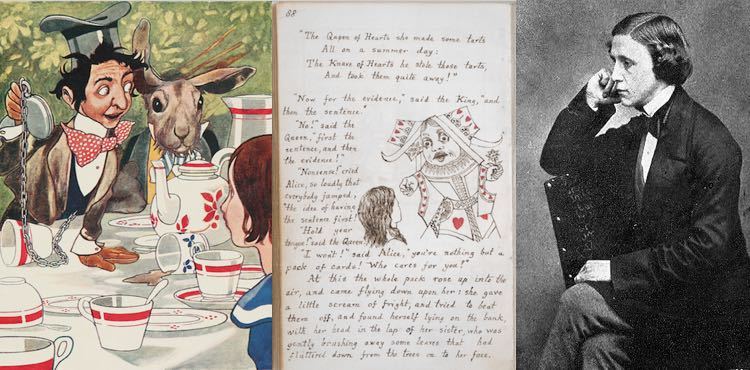Alice’s Adventures in Wonderland fell down the rabbit hole and into the published world 150 years ago this month.
Lewis Carroll first told the story to family friends on a boat ride down the Isis river in an attempt to entertain three young sisters. One of those girls was 10 year-old Alice Liddell, whom Carroll later confessed was his favorite of the three. Alice loved the fantastical tale so much that she begged him to write it down so it would not be forgotten. After much pestering, Carroll promised the young girl that the story would not be lost.
Nearly two and a half years later Carroll delivered the story to Miss Liddell handwritten in a green leather booklet filled with illustrations and presented as a Christmas gift in 1864.
CHECK Out: New Best-selling Book Designed to Put Children to Sleep in Minutes
It was through later encouragement from friends who also read the manuscript that Carroll set his mind to publishing the story.
Composed of twelve short chapters that read like individual episodes, the children’s book begins with seven year-old Alice, sitting with her sisters. After falling asleep, she enters “Wonderland” by falling down a rabbit hole. Alice encounters many strange animals that engage her in conversation. As she moves deeper into Wonderland she becomes more enchanted–and confused–by the inhabitants of the strange land, including the Queen of Hearts who invites her for a game of croquet during which the infamous Cheshire Cat appears. At the end of the novel, when she finds herself in trouble, she wakes up. Her adventures in Wonderland–and all the meaningful metaphors–were all a dream.
RELATED: Brand New Book by Dr. Seuss–Was Lost–Now Published 55 Years Later
Lewis Carroll was the pen name used by Charles Lutwidge Dodgson, a shy man with a stammer and a great reluctance to open his private life. Though he remained personally sequestered from the spotlight, he relished the job of marketing his well-loved children’s story in any way he could. Illustrations of his quirky characters were placed on everyday items for children to see, such as biscuit tins and postage stamp cases.
ALSO: Precious “Lost” Tolkien Story to be Published For the First Time
The book’s sequel, Through the Looking-Glass, which includes the poem Jabberwocky, was published six years later.




















